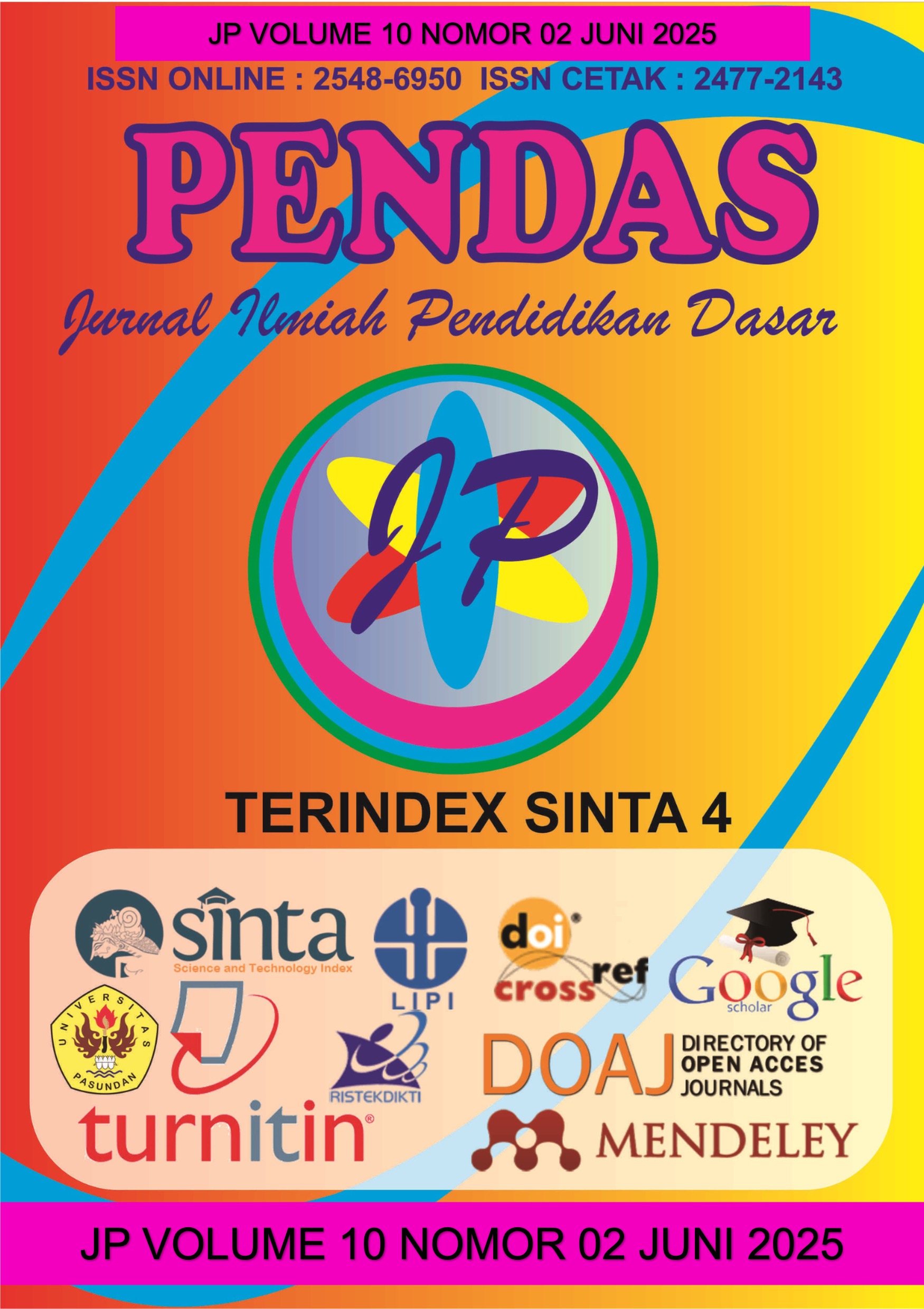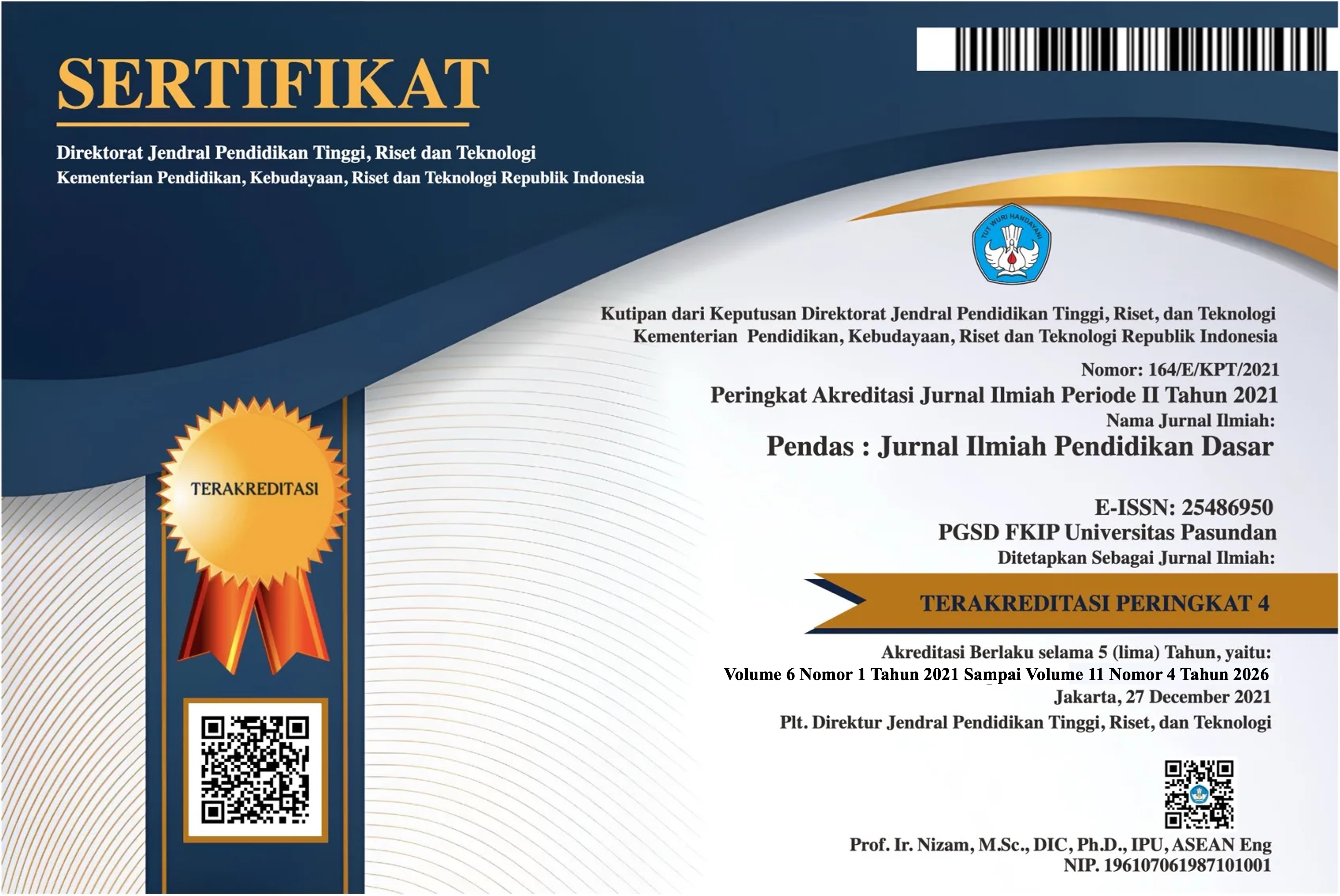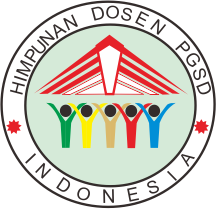STATUS GIZI DAN KEBUGARAN JASMANI ANAK SEKOLAH DASAR: TINJAUAN KORELASIONAL BERDASARKAN PACER TEST
DOI:
https://doi.org/10.23969/jp.v10i02.27717Keywords:
nutritional status, physical fitness , e lementary school studentsAbstract
ABSTRACT
This study aims to analyze the relationship between nutritional status and physical fitness of sixth-grade students at SDN Pacarkembang IV Surabaya using a quantitative correlational approach with a total sample of 63 students. Nutritional status was assessed using the Body Mass Index for Age (BMI/A), and physical fitness was evaluated using the PACER Test. The results showed that the majority of students had normal nutritional status (42.9%). However, the proportion of undernutrition was still significant (38.1%), with most students’ physical fitness levels falling within the low to very low categories (50.8%). The Kruskal-Wallis test revealed a significant relationship between nutritional status and physical fitness (p = 0.000), confirming that good nutritional status contributes to improved physical fitness. These findings emphasize the importance of a holistic approach that integrates nutrition, physical activity, and health education in efforts to improve the quality of life of school-aged children. This study provides empirical evidence for the development of school health programs and encourages collaboration among schools, parents, and policymakers to support the optimal growth and development of students, although the results cannot be widely generalized due to the study’s location limitations.
Keywords: nutritional status, physical fitness, elementary school students
ABSTRAK
Penelitian ini bertujuan untuk menganalisis hubungan antara status gizi dan kebugaran jasmani siswa kelas VI di SDN Pacarkembang IV Surabaya menggunakan pendekatan kuantitatif korelasional dengan total sampel 63 siswa. Status gizi diukur melalui Indeks Massa Tubuh berdasarkan Usia (IMT/U) dan kebugaran jasmani dinilai dengan PACER Test. Hasil penelitian menunjukkan bahwa mayoritas siswa memiliki status gizi normal (42,9%), namun proporsi gizi kurang masih signifikan (38,1%), dengan tingkat kebugaran jasmani sebagian besar berada pada kategori rendah hingga sangat rendah (50,8%). Uji Kruskal-Wallis mengungkapkan adanya hubungan signifikan antara status gizi dan kebugaran jasmani (p = 0,000), yang menegaskan bahwa status gizi yang baik berkontribusi terhadap peningkatan kebugaran jasmani. Temuan ini menekankan pentingnya pendekatan holistik yang mengintegrasikan aspek gizi, aktivitas fisik, dan edukasi kesehatan dalam upaya peningkatan kualitas hidup anak usia sekolah. Penelitian ini memberikan dasar empiris bagi pengembangan program kesehatan sekolah dan mengajak kolaborasi antara sekolah, orang tua, dan pembuat kebijakan untuk mendukung tumbuh kembang optimal siswa, meskipun hasilnya belum dapat digeneralisasi luas karena keterbatasan lokasi penelitian.
Kata Kunci: status gizi, kebugaran jasmani, siswa sekolah dasar
Downloads
References
Hanim, B., Ingelia, I., & Ariyani, D.
(2022). Kebiasaan Sarapan Pagi
dengan Status Gizi Anak Sekolah
Dasar. Jurnal Kebidanan Malakbi ,
3 (1), 28.
https://doi.org/10.33490/b.v3i1.
570
Hind Mehmas, A. M., Dalal Fehaid, A.
S., Khadija Omar, A. O., Reem
Nasser, A. Q., & Sami Mathkar, A.
M. (2022). the Power of Nutrition:
How a Healthy Diet Can Shield
Against Chronic Diseases. EPH -
International Journal of Medical
and Health Science , 8 (2), 14–21.
https://doi.org/10.53555/eijmhs.
v8i2.176
Hutajulu, L. M. V., Dieny, F. F.,
Probosari, E., & Tsani, A. F. A.
(2022). Status Gizi Dan Anemia
Kaitannya Dengan Kebugaran
Tubuh Santriwati Di Pondok
Pesantren Askhabul Kahfi Kota
Semarang. Gizi Indonesia , 45 (1),
23–34.
https://doi.org/10.36457/gizindo.
v45i1.568
Israyati, N. (2021). Relationship of
Nutritional Status Towards
Correct Motor Development in
Toddlers at Keluk Pakis Full Star
Posyandu, Pekanbaru City, 2021.
Journal of Midwifery and Nursing ,
3 (2), 80–83.
http://iocscience.org/ejournal/ind
ex.php/JMN/article/view/1435
Kurniawan, E. Y., Indriyani, & Balqis,
L. (2024). Tumbuh Kembang
Anak Usia SD Berdasarkan Fisik
dan Mental. Jurnal Penelitian
Guru Indonesia , 4 (5), 3626–
3637.
https://doi.org/10.58578/tsaqofa
h.v4i5.3409
Latino, F., Romano, G., & Tafuri, F.
(2024). Physical Education
Teacher ’ s Continuing
Professional Development Affects
the Physiological and Cognitive
Well-Being of School-Age
Children. Education Sciences ,
14 (1199), 1–24.
educsci14111199
Listianasari, Y., & Putra, A. F. E.
(2023). Fat Intake and Physical
Activity in Junior High School
Students with Over Nutrition
Status. Nutriology: Jurnal
Pangan, Gizi, Kesehatan , 04 (2),
59–64.
https://doi.org/10.30812/nutriolo
gy.v4i2.3382
Longmuir, P. E., Gunnell, K. E.,
Barnes, J. D., Belanger, K., Leduc,
G., Woodruff, S. J., & Tremblay,
M. S. (2018). Canadian
Assessment of Physical Literacy
Second Edition: A streamlined
assessment of the capacity for
physical activity among children 8
to 12 years of age. BMC Public
Health , 18 (Suppl 2).
https://doi.org/10.1186/s12889-
018-5902-y
Maruszczak, K., Kielar, A., Kasprzak,
M., Kasperek, W., & Kochman, M.
(2023). Adolescents’ nutritional
status and its association with
physical fitness, physical activity
attitudes, and sleep duration.
Archives of Physiotherapy and
Global Researches , 26 (1), 13–20.
Downloads
Published
Issue
Section
License
Copyright (c) 2025 Pendas : Jurnal Ilmiah Pendidikan Dasar

This work is licensed under a Creative Commons Attribution 4.0 International License.



















